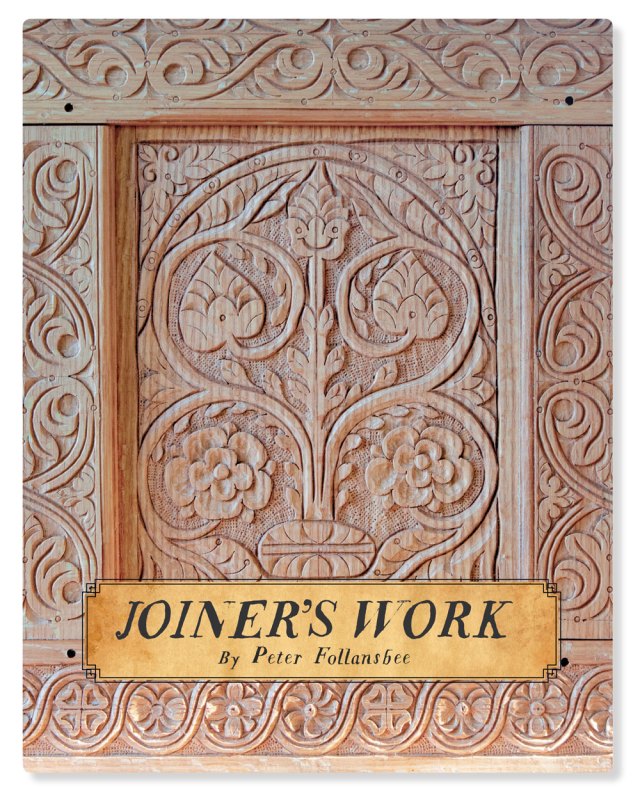
Editor’s note: We’ve just sent Peter Follansbee’s book, “Joiner’s Work,” to the printer. It will be released in May. If you order a pre-publication copy from our store you will receive a free pdf of the book at checkout.
I’ve told most of my stories many times. When I first learned woodworking, it was from books. Books and one magazine. Ultimately that led me to taking a workshop/class with John (Jennie) Alexander and Drew Langsner. Some years later, Alexander and I started a correspondence in which we collaborated while 500 miles apart. This correspondence consisted of letters, 35mm slides, notes and photocopies of research/books/museum work. Back and forth these things sailed between Hingham, Mass., and Baltimore, Md. Maybe three or four times a year we’d physically work together. This went on for quite a while, until email came along and changed how we worked. (I lost all the email copies of our collaboration in a hard-drive crash. Let that be a lesson….)
What this means is I have been documenting my woodworking habits, ideas, foibles since about 1989, in words and pictures. I learned how to use a camera, tripod, cable release/self-timers etc. back in those days to shoot slides showing JA what I was doing – while s/he’d do the same down in Baltimore. We ate through a lot of Ektachrome. The good ones we kept, and used in slide lectures to woodworking groups, museum audiences and whoever would sit still for our dog and pony shows.
Interestingly, when I started museum work in 1994, that made my documentation more difficult. It was the audience – no one wanted to see all that gear set up in my shop, so I was limited in how often I could set up my camera stuff. Mostly, then, it was before or after hours during the season, but in the off-season/winter, I just left it in place.
Starting about 1992, JA and I would often talk about “the book,” as in, “we’ll have to put that in the book…” about joinery. That book percolated for 20 years until it became “Make a Joint Stool from a Tree.”
A couple years before that book was done, I had the idea for “my” book – much of the iconic joined and carved furniture of the 17th century: chests and boxes, cupboards, chairs, tables and more. And carving. And more carving. So I wrote and wrote, took pictures and filed things where, in theory, I could find them.
Like the joined stool book, this one got interrupted a few times, but I halved the time it took and then some. We ditched some of the repetition, but I think when you learn the mortise-and-tenon and frame-and-panel, then composing the piece of furniture is not all that complicated. A cupboard is not much different than a chest; the chair and table are like overgrown joint stools, Thus the focus of the new book is boxes and chests and carving. And more carving.
One standout visitor comment at my old job I remember clearly. One of the members of what I call my “craft genealogy,” Bill Coperthwaite, had just died. He was on my mind as I was working that busy November day. I forget what I was making, but it was oak for sure – and a woman watched me for quite a while, we chatted some, and in the end, she turned to her partner and said, “It makes me want to go home and make something!” I hope my new book, “Joiner’s Work,” gets the same reaction.









